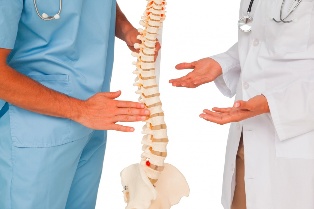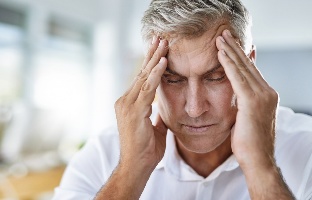
Many people associate the word "osteochondrosis" with old age. There is an opinion that this is a disease of grandparents, where "shoots in the lower back" and "pain in the back". However, there is only one truth in this delusion: indeed, osteochondrosisdegenerative(caused by local metabolic disorders)changes in the spine, which inevitably appear in all the elderly. However, osteochondrosis is found today in 9 out of 10 people over the age of 45, and the first manifestations of the disease can begin as early as 25 years of age.
This disease is even called"disease of civilization", because the main cause of osteochondrosis is improper "exploitation" of the spine. The fact is that modern people submit to excessive load, and, paradoxically, not when he runs or lifts weights, but when he sits without getting up from a chair for hours. This load is calledstaticand is very complex. Because someone assumes he is resting while he is sitting. But in fact, the spine in a sitting position works with increased pressure.
How the spine works
To understand what osteochondrosis is, you need to understand what the human spine is. We all know that the spine is made up of vertebrae that are connected in series by the intervertebral disc. In total, a person usually has 33-34 vertebrae: 7 of which form the cervical region, 12 - thoracic area, 5 (or 6 in a small percentage of people) - lumbar, 5 more vertebrae, grow together, form the sacrum and, finally, the coccygeal region consistsof the other five (or four - depending on individual characteristics) vertebrae. The vertebrae are actually bones and do not move, but so that they can move freely, provide movement throughout our body, and also so that they do not collapse due to impact and friction, there is a layer of gelatin between each vertebra (calledpulposus nucleus) is surrounded by a strong multi-layer plate (annulus fibrosus). Collectively, this is called the intervertebral disc.In addition, the structure of the spine contains many ligaments, channels, nerves. This is a very complex organ that greatly determines the work of almost all body systems, as it protects the spinal cord and affects its function.

The vertebral and intervertebral discs are constantly renewed throughout a person's life. This may be due to the fact that they are supplied with blood and are always given good nutrients. However, if, for some reason, nutrition begins to flow to the spine in insufficient amounts, the nucleus pulposus loses its properties, the intervertebral disc becomes flat and less elastic, cracks appear in the annulus, and the vertebrae themselves begin to move in different and muted directionsapproach. All of this leads to dangerous deviations - especially toinflammation in the spine itself and in the surrounding tissues, as well as compression of the spinal cord and spinal cord.
It is interesting that concepts like "spinal osteochondrosis" exist mainly in the post-Soviet space. In foreign literature, changes that occur in the spine are called"hernia", "myofascial pain", "disc injury", "dorsopathy". So, if you have ever heard something similar to yourself, then you have spinal osteochondrosis. Forintervertebral hernia, it is considered one of the stages of osteochondrosis.
The disease does not undergo an acute process and develops gradually: first, the intervertebral disc narrows, changes degeneratively, then protrudingappears- the nucleus pulposus appears to be squeezed and mixed with a fibrous ring, but does not break it. When there is a rupture of the fibrosus annulus, they talk aboutintervertebral hernia.Eventually, the most severe stage of osteochondrosis,the intervertebral discs are worn out, the vertebrae begin to rub against each other and even collapse, pathological bone growth and osteophytes appear on them. In the final stage, the spine, as before, becomes "rocked", that is, loses its mobility, which can lead to disability.
Causes of spinal disease
For what reasons do all of the abovedegenerative changes occur?As already mentioned, the main reason isan abnormal load on the spine: for example, when a person has to sit a lot in an uncomfortable position, "hump", the cervical and thoracic areas experience tension and do not acceptfood is needed. In addition,osteochondrosis can develop due to poor body posture.However,sports, especially strength sports, with violations of exercise techniques, can also causedegenerative changes in the spine.
Another common cause isback injury. The development of osteochondrosis can also be influenced byhereditary genetic predisposition, hormonal disorders, overweight, unhealthy diet, inadequate water intake and, consequently, dehydration, smoking and alcohol abuse.
Women often experience the first manifestations of osteochondrosis during pregnancy, then, when young mothers have to feed their babies in uncomfortable conditions for themselves and often carry them in their arms, the condition of the spine worsens.
Symptoms of osteochondrosis
Symptoms of osteochondrosis vary and depend on the exact part where the disorder occurs. Pain is the main manifestation of this pathology, however, until therupture of the annulus fibrosusit is mild, can be dull, depressing, and the patient may not even notice it.Often the pain gets worse in the morning or after physical exercise, radiating to the arms, legs, neck, ribs and chest (in this case, osteochondrosis is easily confused with coronary heart disease).
In addition,numbness and tingling may appear in the limbs.
With osteochondrosisin the cervical spine, headaches may appear, sometimes very severe, dizziness, nausea, whistling in the ears. The development of a hernia, which causes compression of the nerve endings, can lead to disruption in the work of internal organs associated with the affected nerve. For example, with a hernia in the lumbar spine, problems with urination may appear, potential loss, in the chest - digestive disorders, in the cervix - problems with the blood supply to the brain.

Diagnosis of osteochondrosis
Only a doctor can distinguish osteochondrosis from other internal organ diseases and determine the cause of the pain. Today, the most reliable method for diagnosing spinal diseases is considered magnetic resonance imaging.
X-rays are also reliable, but less informative. On X-ray images, you can see changes in the intervertebral disc, but you cannot, for example, look at the hernia and assess the condition of the spinal cord and its degree of compression by the transmitted vertebrae. In addition, MRI allows you to distinguish osteochondrosis from other dangerous diseases, including the formation of malignant and ankylosing spondylitis.
Is it possible to cure osteochondrosis?
Unfortunately, it is impossible to cure osteochondrosis, but it is possible to alleviate the patient's condition andstop further destruction of the intervertebral disc, however, for this it is necessary tocompletely change lifestyle - physical therapy, swimming, follow courses on a regular basis or manual therapy, start eating properly and quit bad habits. Exercise, massage, proper nutrition, and weight loss can have far greater and long-term healing effects than medications.
Doctors are still debating the effectiveness of chondroprotectors - drugs that restore cartilage tissue and, presumably, strengthen the annulus fibrosus, its effectiveness has not been proven enough, but since they are certainly not dangerous, they can be used to treat osteochondrosis.
For severe pain, your doctor may prescribe nonsteroidal anti-inflammatory drugs (NSAIDs), muscle relaxers (drugs that relax muscles), and analgesics.
Used in the treatment of osteochondrosis andvitamins, as its deficiency causes further destruction of the intervertebral disc:vitamin B, for example, contributes to increased protein metabolism between tissues, and since protein is a substancethe main structure in the body, the normalization of protein metabolism contributes to the recovery of nerve tissue and cartilage. Vitamin A improves blood circulation. However, by taking vitamins, like other medications, you need to be careful, as it can cause severe side effects, and it can only be taken after consulting a doctor and under his supervision.
Surgical treatment of osteochondrosis may also be performed, but, as a rule, it is performed when there issignificant narrowing of the spinal canal and excessive compression of nerves and spinal cord by resulting hernias. In this case, the situation is so difficult that the patient, for example, can not walk, his internal organs begin to fail, or there is a risk of stroke. Often, such severe consequences are due to osteochondrosis of the cervical and lumbar spine, degenerative changes in the thoracic spine, even in the presence of a hernia, almost never require surgical treatment.
Today,a method called sparing surgerywas actively introduced into medical practice, when doctors successfully defended the integral structure of the vertebrae by removing part of the nucleus pulposus using theendoscope. The device is inserted into the site of a spinal lesion through a small incision in the skin, which prevents large blood loss. Since the entire disc is not removed during surgery, spinal biomechanics are generally uninterrupted, and this shortens the recovery period. Often, patients get up standing within a day after surgery. However, any spinal surgery is still fraught with complications and subsequent recurrence of the disease, so an experienced specialist will try to delay the surgical treatment until the last one. And here it all depends on the patient himself: if they follow all the recommendations of the doctor and take care of their health, then even if there is a hernia, they will be able to do it without surgery.

















































